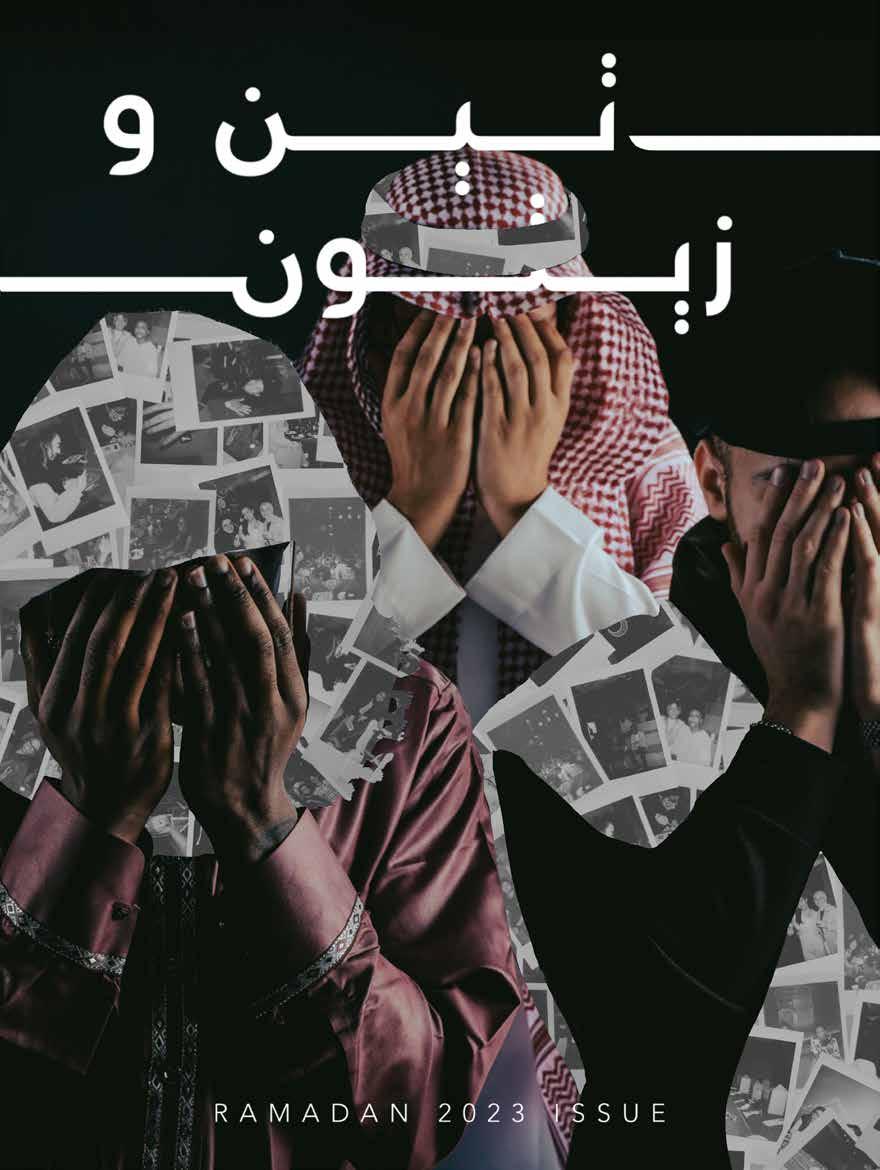
EDITOR IN CHIEF
INTRODUCTION
FIG&OLIVE EDITORIAL MAGAZINE OUR STATEMENT
The Muslim Student Association is thrilled to present Fig&Olive, a groundbreaking cultural editorial magazine dedicated to showcasing the vibrant world of Muslim & MENA culture on campus, the dynamic creative industries in the real world, personal narratives, and much more. This publication places a strong emphasis on multidisciplinary expression, featuring poetry, compelling short stories, thought-provoking op-ed interviews, diverse artwork, and captivating photography.
Fig&Olive is an innovative and inclusive cultural editorial magazine brought to you by the Muslim Student Association. With a commitment to showcasing the richness and diversity of Muslim culture on campus and beyond, our purpose is to provide a platform that celebrates and amplifies the voices, experiences, and creative expressions of the Muslim community. This magazine aims to make the muslim community’s voices heard, their work seen and their presence made a part of the conversation.
Our magazine goes beyond boundaries, exploring the intersections of culture, art, society, and the creative industries in the real world. By showcasing the talents of Muslim individuals in fields such as literature, poetry, visual arts, and photography, we hope to give a platform for those that otherwise lack one. We hope to inspire creative work, educate outside our community, and foster a sense of unity and pride within the Muslim community and the broader campus community.
Fig&Olive is more than just a magazine; it is a platform for expression, cultural exploration, and intellectual engagement. We invite readers from all backgrounds to join us on this enlightening journey, where creativity flourishes, voices are heard, and connections are forged. Together, let us celebrate the vibrant tapestry of Muslim culture and weave a stronger community through Fig&Olive.
2
Saddqa Bahidrah
LETTER FROM THE EDITOR

Asalamu Alaikum, Ramadan is a month of self reflection and taking time out of our year to truly dedicate ourselves to our Creator. What better way of reflecting than to create the first issue of the Muslim Student Association’s editorial magazine surrounding the Ramadan of 2023 at Pratt Institute.
For many muslims on campus, this was the first real connection to their faith they’ve had while studying at Pratt. This being the first year in Pratt Institute’s history to have a Muslim Student Association, the board members felt a responsibility to create a welcoming atmosphere for the muslims on campus, and foster a community. Once and for all.
Saddqa, a 19-year-old student from Saudi Arabia, is currently studying architecture at Pratt Institute’s School of Architecture.
Despite being a first-year student, Saddqa made history at Pratt by becoming the President of the Muslim Student Association in the winter of 2023, becoming one of the youngest club presidents ever. “My country [Saudi Arabia] offers a sense of hospitaity beyond measure, I want to emphasize importance of this within the [Muslim Student] Association.” He says.

In this issue you’ll find a variety of different mediums for expressing and documenting Ramadan 2023. We focus on op-ed interviews where we discuss with individual members, their experiences during this Ramadan and much more. We learn about different cultures from across the world, including; Indonesia, Turkiye, Saudi Arabia and more. We explore different art scenes through photography, and arabic calligraphy. The MSA hosted 3 events during Ramadan that are also reviewed here.
We push past the boundaries of Pratt and discuss some significant events that happened during Ramadan. Learning about other cultures is important in the scope of Islam, because Islam is adopted by all, around the world.
We hope you enjoy the first ever issue of Fig&Olive.
Sincerely,
Pictured above is interim Editor-inChief Saddqa Saeed Bahidrah
3


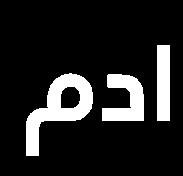
4
FIG&OLIVE STAFF
SADDQA BAHIDRAH
MSA PRESIDENT
EDITOR-IN-CHIEF
ZAHRAA NASRALLA
MSA CONTENT CREATOR
SOCIAL MEDIA MANAGER
WRITER AVAILABLE POSITION
AVAILABLE POSITION
EDITOR
ADEM WIJEWICKREMA
MSA PERSONAL RELATIONS
MANAGING EDITOR
AVAILABLE POSITION
CREATIVE DIRECTOR
AVAILABLE POSITION
PHOTOGRAPHER
AVAILABLE POSITION
MSA TREASURER
5
TABLE OF CONTENTS Statement of Purpose & Introduction................................................................................................02 Introduction Letter from the Editor..........................................................................................................................03 Letter Story and Reasoning Behind our Name..............................................................................................0 Why Fig&Olive? Photography by Adem Wijewickrema................................................................................................14 Ramadan Through a Lense Nafhan Nurul Qodri.............................................................................................................................28 Beer & Pizza Nilifur Haciosmanoglu..........................................................................................................................20 The Joy of Jummah Sadeen Owis..........................................................................................................................................23 Vimto Deficit Layal Taleb............................................................................................................................................26 NYC is not Saudi Arabia One of the Main Islamic Art Forms.....................................................................................................30 Arabic Calligraphy Quran Chapter 95.................................................................................................................................10 Surah Al Tin The MSA events of Ramadan 2023...................................................................................................32 Fostering a Community Basics of Ramadan and Overview.......................................................................................................12 Ramadan Overview 6
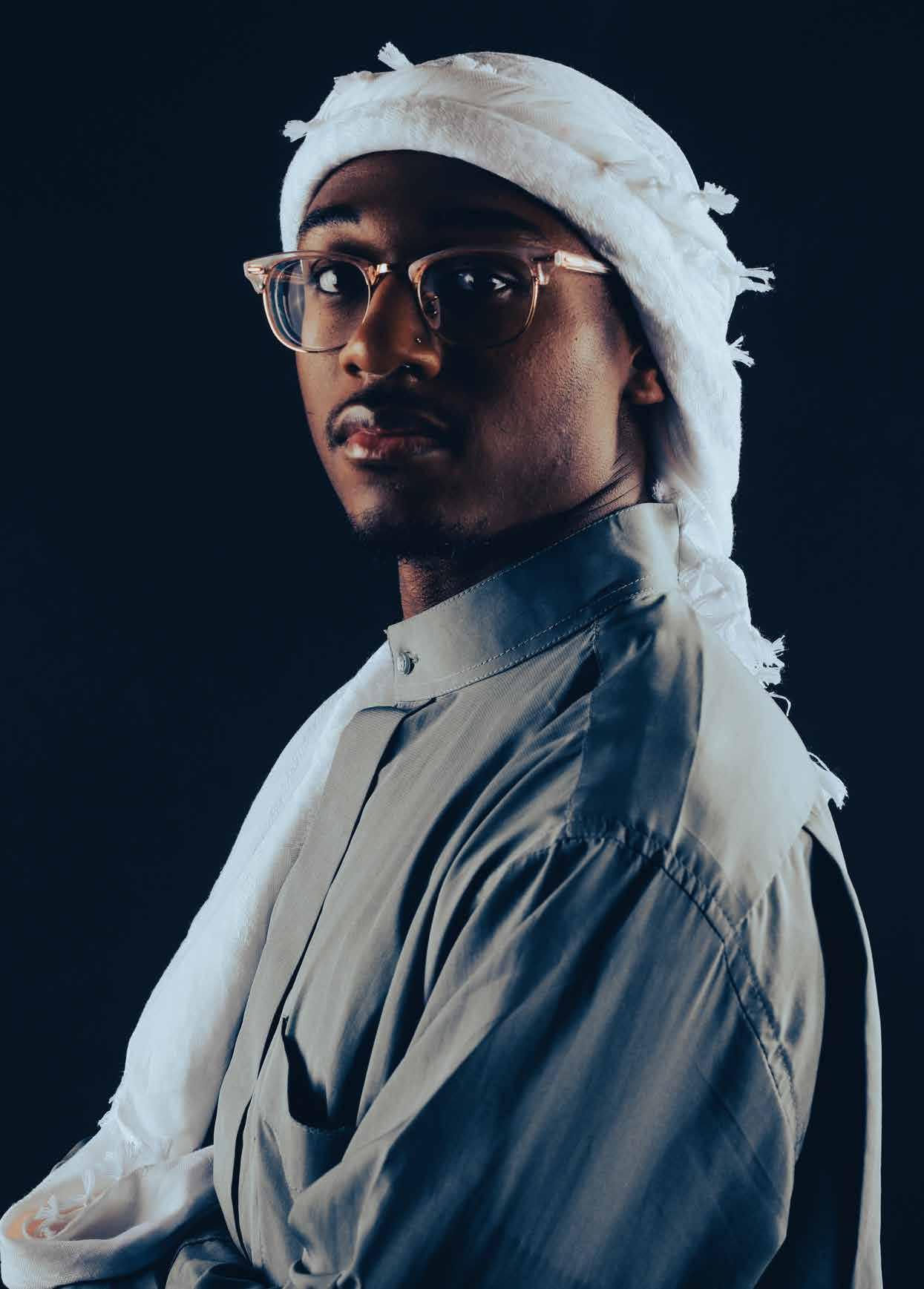

7
WHY FIG&OLIVE?
Surah Al-Tin
Surah Al Tin, found in the Quran, serves as a profound source of inspiration for Fig & Olive. This chapter draws our attention to the natural world, emphasizing the significance of figs and olives as symbolic representations of human existence. The surah encourages reflection on the potential of human beings, highlighting both their capacity for greatness and the possibility of degradation.
In this surah, Allah reminds us that He created human beings in the best form, endowing us with intellect, free will, and the ability to appreciate and enjoy the blessings of this world. The mention of figs and olives symbolizes the abundant provisions and beauty that surround us.
However, the surah also cautions that despite being created in the best form, humans have the capacity to deviate and sink to the lowest levels of existence. It serves as a reminder that neglecting faith and good acts can lead to spiritual decline and Jahanam.
Fig & Olive, inspired by the profound teachings of Surah Al Tin, encapsulates the essence of our magazine and its mission. We seek to explore the diverse aspects of Muslim culture and showcase the contributions of the Muslim community in areas such as art, literature, science, philanthropy, and more. Through thought-provoking articles, captivating interviews, and inspiring stories, we aim to encourage readers to reflect upon their own potential and embrace a path of belief and righteous action.
Just as the fig and olive represent the richness of the natural world, Fig & Olive aims to highlight the richness of Muslim culture and its capacity to positively impact society. We believe that by promoting dialogue, understanding, and unity, we can contribute to the betterment of our community and beyond. Let us draw inspiration from Surah Al Tin and strive to make a meaningful difference in the world, following the path of belief and goodness prescribed by the Quran.
8
The Fig
Figs hold immense symbolism within Islamic traditions. They are often associated with knowledge, wisdom, and enlightenment. Just as the fig tree yields fruit that nourishes both the body and the mind, Fig & Olive seeks to provide a platform for intellectual nourishment, exploring diverse facets of Muslim culture, history, art, literature, and more.
The Olive
Olives hold great spiritual significance in the Islamic faith. They symbolize peace, tranquility, and unity. As the olive tree stands firm against the elements, rooted in the earth, it serves as a powerful metaphor for the resilience and strength of the Muslim community. Fig & Olive endeavors to foster a sense of unity and harmony within our diverse community, promoting understanding, dialogue, and peaceful coexistence.
The Muslim Student Association
The Muslim Student Association (MSA) holds a central role in the establishment and development of Fig & Olive. As an organization committed to fostering a strong Muslim community on campus, the MSA recognized the need for a platform that would amplify the voices and experiences of Muslim students. Through their collective efforts, the MSA has nurtured the magazine, ensuring its alignment with the core principles of unity, knowledge, and dialogue.
The MSA’s involvement extends beyond the initial concept, as it actively supports the magazine through contributions, event collaborations, and community outreach. Fig & Olive stands as a testament to the MSA’s commitment to enriching the cultural landscape of our university, nurturing an environment that embraces diversity, and fostering mutual respect and understanding.
 The Muslim Student Association’s logo designed by rising 3rd year Animation Major Nora Yassin. Nora was a founding board member of the Muslim Student Association and her contributions were critical to the foundation of the MSA.
The Muslim Student Association’s logo designed by rising 3rd year Animation Major Nora Yassin. Nora was a founding board member of the Muslim Student Association and her contributions were critical to the foundation of the MSA.
9










10
SURAH AL-TIN
In the name of Allah, the Most Gracious, the Most Merciful
95:1 BY THE FIG AND THE OLIVE [OF JERUSALEM]
95:2 AND MOUNT SINAI,
95:3 AND THIS SECURE CITY [OF MECCA]!
95:4 INDEED, WE CREATED HUMANS IN THE BEST FORM
95:5 BUT WE WILL REDUCE THEM TO THE LOWEST OF THE LOW,
95:6 EXCEPT THOSE WHO BELIEVE AND DO GOOD— THEY WILL HAVE A NEVER-ENDING REWARD.
95:7 NOW, WHAT MAKES YOU DENY THE [FINAL] JUDGMENT?
95:8 IS ALLAH NOT THE MOST JUST OF ALL JUDGES?
11
RAMADAN OVERVIEW
What is Ramadan?
Ramadan is the holiest month in the Islamic calendar, observed by Muslims worldwide. It is a time of heightened spirituality, self-reflection, and devotion to Allah (God). This month holds great significance as it commemorates the revelation of the first verses of the Quran to Prophet Muhammad (peace be upon him).
Fasting
At the heart of Ramadan lies the act of fasting. From dawn until sunset, Muslims abstain from food, drink, and other physical needs. This practice serves as a way to purify the soul, cultivate empathy for those less fortunate, and foster self-discipline and gratitude. Fasting encourages individuals to redirect their focus towards spiritual nourishment, seeking closeness to Allah through prayer and contemplation.
Taraweeh
During Ramadan, Muslims partake in a special prayer known as Taraweeh. These voluntary night prayers take place after the evening prayer (Isha) and are performed in congregation. The recitation of the Quran is an integral part of Taraweeh, with the aim of completing the entire Quran over the course of the month. This nightly practice fosters a sense of unity and tranquility, creating a spiritual atmosphere that enriches the Ramadan experience.
Laylat al-Qadr
Laylat al-Qadr, also known as the Night of Power, holds immense significance within Ramadan. It is believed to be the night when the first verses of the Quran were revealed.
Muslims consider this night to be holier than a thousand months, and it is said that worship and prayers during Laylat al-Qadr carry tremendous reward. The exact date of this night is unknown, encouraging believers to increase their devotion and prayers during the last ten nights of Ramadan.
Last Ten Days of Ramadan
The final ten days of Ramadan are a time of intensified devotion and heightened spirituality. Many Muslims retreat to the mosque or dedicate themselves to personal seclusion, engaging in additional acts of worship and seeking moments of selfreflection. It is during this period that the search for Laylat al-Qadr, through increased prayers and supplication, becomes more passionate. Muslims strive to make the most of these final days, as the blessings and rewards of the month reach their culmination.
To the right is a photo of the Grand Mosque in Mecca (Al Haram), pictured by Sadeen Owis.
12

13
RAMADAN THROUGH
In a world that often overlooks the true essence of Ramadan, photographer Adem Wijewickrema brings a new cultural perspective through his captivating cultural photoshoot. As I sat down with Adem to discuss the cover photo of this edition, it became clear that his work was more than just a collection of images—it was a powerful commentary on the aspirations of the Muslim Student Association (MSA) and the significance of Ramadan within the community.
According to Adem, the cover photo serves as a visual representation of the MSA’s endeavors and their desired impact. It depicts 5 muslim men with their hands up to their faces praying. Through this image, Adem encapsulates the spirit of Ramadan, showcasing its profound meaning not only to the MSA but also to the larger Muslim community at Pratt.
As I delved deeper into our conversation, Adem emphasized the importance of the first edition aiding in conveying the significance of Ramadan and the role of the Muslim community at Pratt. The photo shoot and the interviews and images presented in this first issue of Fig&Olive were all made possible by the strong bonds and connections forged within the community over the past year. Looking ahead, Adem expressed his enthusiasm for capturing the forthcoming year’s experiences through more photographs, interviews, and other projects, solidifying the continuous growth and representation of the Muslim community at Pratt. Through his lens, he beautifully portrays the core values of Ramadan and the unity found within the Muslim community.

Adem Wijewickrema
14
THROUGH A LENSE
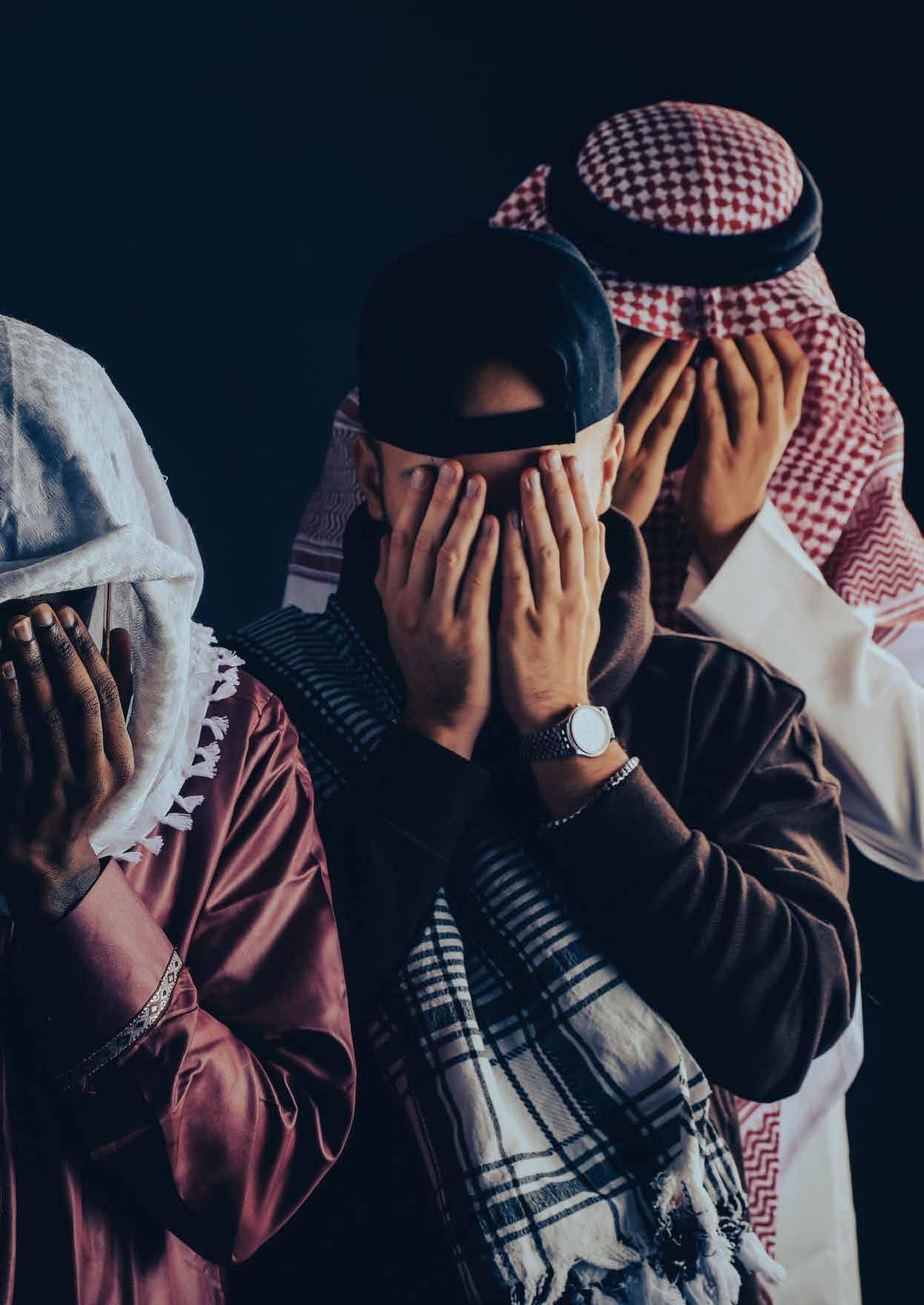
Wijewickrema 15
INTERVIEW WITH ADEM
I sat down with Adem Wijewickrema to learn more about how his culture influences his photography, and what this specific project, in collaboration with Jehan Rana, meant to him.

SADDQA BAHIDRAH:
“HOW DID YOU FEEL WHILE SHOOTING THIS PROJECT?”
ADEM WIJEWICKREMA:
“HONESTLY I WAS JUST REALLY LOOKING FORWARD TO GETTING TO PARTICIPATE IN THIS PROJECT ESPECIALLY DURING RAMADAN. THIS WAS MY SECOND RAMADAN AT PRATT AND THE FIRST ONE I DIDN’T KNOW MANY OTHER MUSLIMS AT PRATT, SO FOR ME THIS WAS A HUGE MARK OF PROGRESSION AND SUCCESS FOR THE MSA. GETTING TO TAKE THESE PHOTOS SHOWED THAT WE HAD BUILT A COMMUNITY AND THROUGH THESE PHOTOS WE CAN SHOW WHO IS IN THIS COMMUNITY AND FOR ME THIS WAS REALLY EXCITING. HOWEVER THIS IS ONLY A PORTION OF OUR COMMUNITY AS THIS WAS ONLY THE MEN OF THE MSA, UPON RETURNING BACK TO PRATT I LOOK FORWARD TO GETTING BACK IN THE STUDIO WITH JEHAN AND TAKING PHOTOS OF EVERYONE ELSE IN OUR COMMUNITY.”
SADDQA BAHIDRAH:
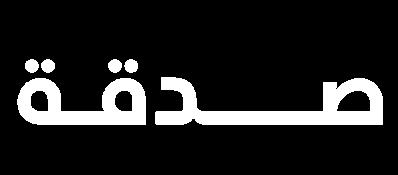
“WHAT KIND OF CULTURAL INFLUENCES AFFECT YOUR PHOTOGRAPHY STYLE?”
ADEM WIJEWICKREMA:
“WHILE MY PHOTOGRAPHY STYLE HAS EVOLVED OVER TIME, ELEMENTS OF CULTURE HAVE REMAINED CONSTANT. GROWING UP WITH A TOP EGYPTIAN PHOTOGRAPHER, KNOWN FOR HER WORK WITH NATIONAL GEOGRAPHIC, CANON, REUTERS, AND VARIOUS MUSEUMS AND ART SHOWCASES WORLDWIDE, GREATLY INFLUENCED MY OWN STYLE. HER USE OF COLOR, EXPOSURE, AND COMPOSITION RESONATED WITH ME. ADDITIONALLY, MY TIME AT PRATT AND AS A TA AT THE INTERNATIONAL CENTER OF PHOTOGRAPHY INTRODUCED NEW SHIFTS IN MY PHOTOGRAPHY, ALLOWING ME TO EXPLORE VISUAL IDENTITY AND CREATE MORE DIVERSE PIECES.”
16
SADDQA BAHIDRAH:
“YOU’RE EGYPTIAN AND SRI LANKAN, WHAT ROLE HAS THAT BI-CULTURE PLAYED IN YOUR LIFE?”

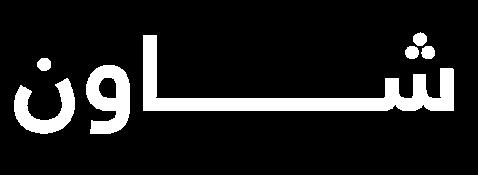

ADEM WIJEWICKREMA:
“THE BI CULTURE ASPECT OF MY IDENTITY WAS VERY PREVALENT IN MY UPBRINGING. BY HAVING THE EXPERIENCES OF A MULTICULTURAL HOUSEHOLD I FEEL THIS MADE ME MORE WELL ROUNDED. TO EXPAND ON THIS BY LIVING IN A DIVERSE ENVIRONMENT I FELT I WAS PUSHED FURTHER THROUGH MY UNDERSTANDING OF CULTURE AND THE WORLD THROUGH ART, RELIGION, LANGUAGE, FOOD AND HOLIDAYS. THE BI CULTURE HOUSEHOLD I LIVED IN COMBINED WITH MY EXPERIENCES OF LIVING IN THE US AND THE MIDDLE EAST ALONG WITH GOING TO IB SCHOOLS WHICH FOCUS ON INTERNATION AL LEARNING EXPERIENCES HAVE VERY MUCH SHAPED ME INTO WHO I AM TODAY.”
SADDQA BAHIDRAH:

“HOW DO YOU FEEL MOST CONNECTED TO YOUR CULTURE?”
ADEM WIJEWICKREMA:

“WHEN LOOKING AT MYSELF AND HOW CONNECTED I AM TO MY CULTURE, THIS IS MOST PREVALENT THROUGH ART, GENERAL BELIEFS/PHILOSOPHIES, FOOD, AND HOLIDAYS AS THESE ARE THE LENSES THROUGH WHICH I DEFINE OR EXPRESS MYSELF THE MOST. THE MOST SIGNIFICANT INFLUENCES ON MY CULTURE IN NEW YORK ARE THROUGH THE PEOPLE I AM ABLE TO CONNECT WITH WHETHER THEY SHARE THE SAME CULTURAL IDENTITY OR THE SAME INTERESTS IN ART. THERE HAS BEEN A HUGE INFLUENCE WHICH I FEEL
SADDQA BAHIDRAH: ADEM WIJEWICKREMA:
“DO YOU HOPE TO SEE MORE CULTURAL INFLUENCE LIKE THIS IN THE PRATT SCENE?”
“WHEN LOOKING AT CULTURE AT PRATT THERE IS A LOT THAT CAN BE DONE AND NEEDS TO BE DONE TO EXPAND ON THIS. PRATT HAS A LOT OF STUDIO CULTURE ACADEMICALLY BUT SOCIALLY AT PRATT THERE IS ALWAYS ROOM TO EXPAND IN ORDER TO SHOWCASE WHAT THE STUDENT BODY HAS TO OFFER.”

17

18



19
THE JOY OF JUMMAH
Nilufer Haciosmanoglu thrives in an unorthodox Ramadan in New York City, confronting discrimination and embracing unity. Her journey showcases resilience, diverse experiences and a nostalgic outlook.
During my conversation with Nilufer, we delved into the inevitable absence of campus life and Ramadan spirit at Pratt. As a minority Muslim campus, the atmosphere during this month lacked the usual vibrancy, gatherings, and joy that Nilufer was accustomed to. Strangely, Nilufer described it as feeling like a birthday, “It’s like it’s your birthday and you’re the only one that feels it, everyone around you is acting like it’s just another day…”
What happens when you bring a Turk to the bustling streets of New York City and challenge her to embrace an unorthodox Ramadan? She not only rises to the occasion but thrives in it.

Nilufer Haciosmanoglu, a student enrolled in the Pratt Architecture & Urban Design Graduate program, spoke with me about her experience. Throughout her year-long stay here, Nilufer has demonstrated an unwavering determination to fully immerse herself in the American Ramadan experience, leaving no stranger unfriended and no stone unturned in her journey to make the most of this unique situation.
The lacked sense of community is what really started to sink Nilufer. She explains, in Turkiye, just because the entire country isn’t decorated for Ramadan, the feeling of all being in it together was palpable. She recalled about the joy of jummah (gathering) and seeing people she typically didn’t see throughout the year. For Nilufer, the essence of Islam was discovered through unity and collectivity, where the act of being together amplified the joy of the faith.
Nilufur says “In every action that we do, it’s best to do it with other people.”
Nilufur shares a heartwarming memory that captures the essence of Ramadan nostalgia—a tradition of showing off her special outfit for Eid. With a gleam in her eyes and a smile on her face, she
Pictured above is Nilufur Haciosmanoglu (right).
20
recalls the excitement of accompanying her mother to the mall a day or two before Eid to find the perfect attire. For three consecutive days, Nilufur and her sisters would proudly wear the same outfit, creating a cherished symbol of the festive season.
The significance of these Eid outfits went far beyond their materialistic value; they became a visual representation of the joy and anticipation that permeated the air during Ramadan. As Nilufur fondly remembers, the outfits were not mere clothing but tokens of celebration. Returning home from the mall, she and her sisters would wash their new garments and hang them up outside their closets, almost like a tableau of excitement. It was a beautiful sight—a glimpse into what awaited them on the day of Eid.
The picture below captures a young Nilufur wearing one of her cherished Eid dresses alongside her sister, showcasing their excitement for the special holiday.

INTERVIEW WITH NILUFUR
I sat down with Nilufur, to ask her a few questions about this past Ramadan. “IF YOU COULD DESCRIBE WHAT THE CAMPUS CULTURE WAS LIKE DURING RAMADAN 2023, IN THREE WORDS WHAT WOULD THEY BE?”
SADDQA BAHIDRAH:
NILUFUR HOS:
“I CAN GIVE YOU LIKE 10 SENTENCES, BUT 3 WORDS I CAN’T. THE CAMPUS SPECIFICALLY IS REALLY HARD TO DESCRIBE. BECAUSE MOSTLY I FELT LIKE IT DIDN’T FEEL LIKE RAMADAN.
SPECIFICALLY TO THE MSA I FELT JOYFUL , THAT’S ONE WORD I WOULD USE. IT FELT GOOD TO BE AROUND OTHER MUSLIMS, IT FELT LIKE A CELEBRATION. VERY ORDINARY , BECAUSE IT FELT LIKE THERE WERE OTHER REGULAR THINGS. AND QUIET .”

SADDQA BAHIDRAH:
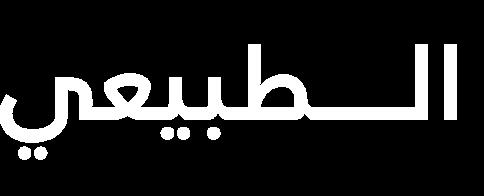
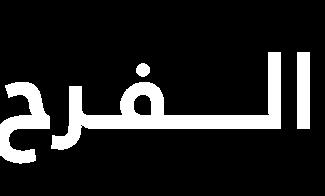
“WHAT FELT ORDINARY TO YOU?”
NILUFUR HOS:
“I WAS THINKING ABOUT THE CAMPUS BEING ORDINARY, NOT RAMADAN. IN THAT SENSE RAMADAN WAS VERY DIFFERENT BECAUSE IT’S NOT WHAT I’M USED TO. THE STUDENTS WALKING ACROSS THE CAMPUS. NOTHING SPECIAL TO THEM IS HAPPENING, BUT SOMETHING VERY SPECIAL TO ME IS HAPPENING.”
21
INTERVIEW WITH NILUFUR continued...
SADDQA BAHIDRAH:
“WHY IS RAMADAN SO IMPORTANT TO YOU?”
NILUFUR HACIOSMANOGLU:
“FOR ME RAMADAN MOSTLY FEELS LIKE A FRESH START. NOW YOU GET TO BE WHO YOU WANT TO BE. I LIKE THE IDEA OF SETTING GOALS, YOU KNOW THAT ONCE YOU ACTUALLY LEAVE THAT PE RIOD, YOU WILL HOLD ON TO SOME OF THOSE GOALS. YOU ARE TESTING YOUR ABILITIES AND YOU ARE TESTING YOUR LIMITS.
NILUFUR HACIOSMANOGLU:
“WHEN YOU DO MOST OF YOUR TRAINING, YOU DONT COMPLAIN ABOUT THE HOURS YOU’RE WORKING AND THE WORK YOU’RE DOING. RAMADAN IS TESTING OUR LIMITS AND SEEING WHAT THE MOST WE CAN DO. YOU TAKE THINGS THAT CAN SUSTAINABLY BE INTEGRATED INTO OUR DAILY LIFE, THAT IS WHAT I LIKE ABOUT IT.
HONESTLY, IF I WANTED TO, I COULD PRAY 20 RAKAAT EVERY DAY. IF YOU WANT TO, YOU CAN MAKE THAT TIME FOR IT. IT GIVES US THAT CHANCE TO REBUILD OURSELVES AS MUSLIMS. THAT’S, TO ME, WHAT MAKES RAMADAN VERY VALUABLE. GETTING THIS OPPORTUNITY EVERY YEAR.”
SADDQA BAHIDRAH:
“WHAT KIND OF NOSTALGIA DO YOU CONNECT WITH RAMADAN? ANY FOND MEMORIES THAT YOU HAVE?”

NILUFUR HACIOSMANOGLU:
“YES, HOW MY MOM WOULD TAKE US A DAY OR TWO DAYS BEFORE EID, TO THE MALL TO GET THESE NEW OUTFITS FOR EID. NO JOKE, FOR THREE DAYS STRAIGHT WE WOULD WEAR THE SAME OUTFIT. THAT WAS LIKE OUR EID OUTFIT. WE WOULD COME HOME, WE WOULD WASH THEM AND HANG THEM UP OUTSIDE OF OUR CLOSETS JUST TO SEE WHAT WE WERE GOING TO WEAR FOR THE EID. OH MY GOD IT WAS JUST LOVELY! WE WOULD JUST PUT THEM ON AND HONESTLY WE WOULDN’T TAKE THEM OFF UNTIL WE WERE FORCED TO TAKE THEM OFF. I LOVED IT. AND THE OTHER THING I WOULD SAY IS VISITING RELATIVES I WOULD NEVER SEE EXCEPT FOR RAMADAN, THAT’S WHAT I LOVE ABOUT THIS, JUST GIVING US A REASON TO CONNECT WITH OUR FAMILIES. I’VE MET SO MANY UNCLES AND AUNTS OF MY MOM AND DAD LIKE THIS. ALSO MY FAMILY, WHAT THEY WOULD DO IS HAVE STUDENTS WHO DIDN’T HAVE THEIR FAMILY IN THE CITY COME OVER FOR RAMADAN AND EACH NIGHT WE WOULD HOST THIS BIG GROUP. OH HOW LOVELY THAT WAS, THAT’S WHAT I WANT TO DO IN TEN YEARS, IT WAS SO BEAUTIFUL!”
22
VIMTO DEFICIT
Saudi born and raised Sadeen Owis shares her experiences of Ramadan. Vimto, a sweet berry drink, became a traditional part of her Ramadan, as with a lot of Saudis.
 WRITTEN BY: SADDQA BAHIDRAH
WRITTEN BY: SADDQA BAHIDRAH

Picture this: The temperature has reached 100 degrees Fahrenheit, and it’s only three hours until Maghrib. You’re sitting in front of the TV, watching cartoon shows on MBC 3, suddenly, a commercial comes on. It’s the sight of an ice-cold pitcher of Vimto being mixed and served in a glass. The crackling sounds of the ice as it hits the liquid, the crisp sound of the liquid being poured, and the condensation forming on the glass make it impossible to keep watching. In Saudi Arabia, this was an integral part of our childhood.
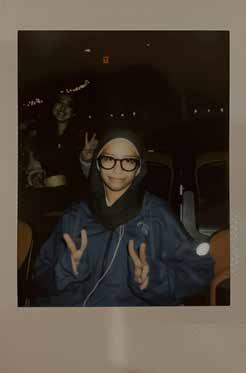
There’s nothing quite like the cruel and unusual punishment of watching someone enjoy an icecold glass of Vimto while you’re still fasting during Ramadan. For Sadeen Owis, this tormenting experience was one of the things she missed the most while being away from Saudi Arabia for college.
Sadeen, a rising junior at Pratt Institute majoring in Animation, provided valuable insights on the changes she noticed during Ramadan in both 2022 and 2023. Reflecting on Ramadan 2022, Sadeen described it as a short, concealed, and peaceful experience. However, the same year, she quickly grappled with impostor syndrome. The overwhelming lack of Muslim culture on campus made her feel like the only Muslim student. Consequently, she faced the challenge of expressing her religion and culture while trying to fit in with her American peers. Sadeen’s primary concern
was making others uncomfortable. Wearing the hijab as a practicing Muslim, it felt as though her faith was boldly written on her forehead in red marker— a vulnerable position to be in, particularly in the city of New York. She often feared ridicule or instilling fear in others simply because of her appearance.
23
In 2023, a complete shift in Sadeen’s approach to living in America occurred. She embraced her true self unapologetically, observing Ramadan with a sense of keenness and personal growth, allowing her to find her own path. Sadeen described this Ramadan as both rehabilitating and significant, feeling like a “rebirth of iman” within herself. The opportunity to recharge and reconnect with her creator during Ramadan is what Sadeen cherishes the most. This Ramadan seemed to be the most significant and exciting one she’s had while away from home. However, she acknowledged the challenges she faced.





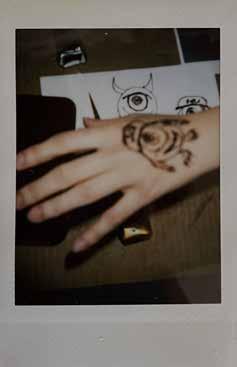
Growing up in a Muslim country, Sadeen was surrounded by an environment that facilitated observing Ramadan, such as participating in taraweeh prayers, staying up for suhoor, and breaking fast with family. Sadeen mentioned how her sleep schedule became disrupted during Ramadan since her classes were not adjusted for the late-night taraweeh and suhoor timings, as well as praying fajr. As a result, she occasionally found herself falling asleep in class, needing to be awakened by a professor. She humorously added that it epitomized the essence of an American Ramadan. Despite the balancing between academics, grades, and fasting, Sadeen discovered a deeper devotion to Islam and began to appreciate the true extent of sacrifice.

24
INTERVIEW WITH SADEEN
Looking back at Sadeen’s childhood and pre college times, I asked her about some times she felt deeply connected to and what Ramadan was like for her then. Join us in reading this small conversation.
SADDQA BAHIDRAH:
“WHAT IS A RAMADAN TRADITION THAT YOU USED TO DO BEFORE COLLEGE, THAT YOU EITHER CONTINUED TO DO AT COLLEGE OR WERE NOT ABLE TO DO AT COLLEGE?”
SADEEN OWIS:
“UMM..I MEAN THE FIRST ONE IS KINDA BASIC BUT VIMTO! WE USED TO DRINK VIMTO RELIGIOUSLY, LIKE EVERY SINGLE DAY. THAT WAS RAMADAN. I HAVEN’T FOUND VIMTO HERE…”
SADDQA BAHIDRAH:
“REALLY?”
SADEEN OWIS:
“HAVE YOU?”
SADDQA BAHIDRAH:
“YEAH, I’VE FOUND IT! ZAHRAA FOUND IT AT THIS ONE ARABIC SUPERMARKET, AND SHE ALSO FOUND SUN TOP, IF YOU WANTED THAT…”
SADEEN OWIS:
“NO WAY!”
SADDQA BAHIDRAH:
“I THINK WHAT I NOTICED, LIVING IN NEW YORK CITY IS THAT THERE’S A LOT OF THINGS WE REALLY DON’T KNOW ABOUT. THE CITY IS JUST SO DENSE WITH INFORMATION, WE’RE BASICALLY JUST TOUCHING THE SURFACE. I THINK IT CAN BE OVERWHELMING, HAVING SO MANY THINGS TO DO THAT WE JUST DO NOTHING.”
SADEEN OWIS:
“I TOTALLY AGREE.
ANOTHER THING IS I USED TO BE KIND OF WELL KNOWN FOR MAKING REALLY GOOD FRIED SHRIMP IN MY FAMILY. MY DAD IS A SEABOAT CAPTAIN, SO HE BRINGS IN A LOT OF SEAFOOD. I HAVE MY OWN RECIPE FOR MAKING THE BATTERS AND IT’S EVEN BETTER THAN MY DAD, HE HAS BEEN DETHRONED! I USED TO MAKE FRIED SHRIMP AT LEAST ONCE EVERY RAMADAN FOR MY FAMILY AND I STOPPED WHEN I CAME HERE. IT’S HARD TO MAKE FRIED SHRIMP IN THE DORM.”
SADDQA BAHIDRAH:
“I KNOW YOU’RE FROM JEDDAH, SO YOU HAVE THE SEAFOOD AT YOUR DISCRETION. I THINK A LOT OF PEOPLE CONNECT COOKING TO RAMADAN AND THEIR RAMADAN TRADITIONS, SO WE GET TO CONNECT THROUGH FOOD.”
25
NYC IS NOT SAUDI ARABIA
Layal Taleb’s journey from a cherished Saudi childhood to a challenging but exciting new life in the US, exploring the power of adaptation, community, and self-discovery.
WRITTEN BY: SADDQA BAHIDRAH
Adaptation plays an integral role in the process of growing up. Whether it involves adapting to a new school, moving to a different house, or even pushing to try new foods, the act of adapting is crucial. For Layal Taleb, adjusting to a new country thousands of miles away from home has been a defining experience in her life. Layal, a SaudiBahraini rising Junior at Pratt Institute, is pursuing her BFA in Painting. As a fellow Saudi, I had the opportunity to discuss and relate to many of the challenges she has faced over the past year.
INTERVIEW WITH LAYAL

SADDQA BAHIDRAH:
“SO YOU SAID COMMUNITY, AS ONE OF THE THREE WORDS TO DESCRIBE RAMADAN 2023. DO YOU WANT TO TELL ME MORE ABOUT WHAT YOU MEAN BY THAT?”
LAYAL TALEB:
“I REALLY DON’T WANT TO GIVE IT TO YOU GUYS, BUT YOU GUYS DID IT. THE MSA EVENTS ONCE A WEEK WAS A GOOD THING, BECAUSE DURING THE WEEK YOU HAD SOMETHING TO LOOK FORWARD TO.”
SADDQA BAHIDRAH:

“HAHAHAHA, WHY DON’T YOU WANT TO GIVE IT TO US!”
LAYAL TALEB:
“HAHAHAH, TRULY THOUGH IT FELT LIKE SOMETHING I COULD GO TO, I ALSO HAD MORE FAMILY AND FRIENDS IN THE US THAT I WAS ABLE TO VISIT. I ALSO BECAME MORE COMFORTABLE WITH BEING ALONE, I WOULD MAKE IT EXCITING FOR MYSELF. MY MINDSET STARTED SHIFTING, BECAUSE I NECESSARILY DIDN’T NEED PEOPLE.”
26
Layal, who was born and raised in Jeddah, shared with me her experiences of life there, particularly during Ramadan. She fondly reflects, “Looking back, there’s a golden tint on all the memories in my head.” Layal described her family’s Ramadan routine to me, which involved breaking fast with a small meal, praying together, and then enjoying a larger meal surrounded by family. Being with friends and family was a significant focus for Layal during a typical Saudi Ramadan. She often spent evenings with friends and had the chance to reconnect with extended family members whom she usually saw only during this time of the year. In Jeddah, the entire city undergoes a transformation during Ramadan, with cafes, restaurants and malls opening for Iftar and operating until late at night. The entire country adapts to accommodate the spirit of Ramadan. Layal expresses gratitude for the childhood she had while growing up in Saudi
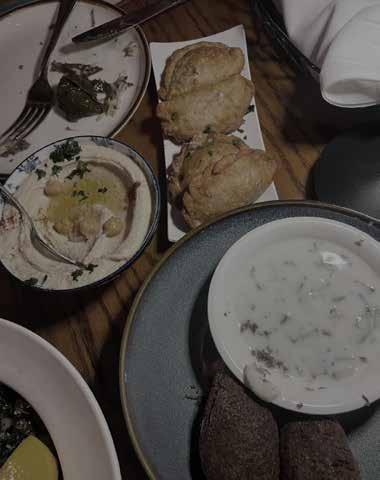
Coming to the United States to pursue her studies was not easy for Layal. She vividly described Ramadan in 2022 as cold, soulless, and lonely. It felt as if she was describing the depths of a freezing hell (aka New York City in the winter). On campus, there was a noticeable absence of any Muslim student culture, and Layal had only a handful of Muslim friends. However, in 2023, things started to change for the better with the establishment of the Muslim Student Association at the beginning of the year. During Ramadan, Layal found comfort in having an event every Friday, which provided her with something to look forward to throughout the week. The opportunity to meet new people and witness a growing Muslim presence on campus was reassuring. However, Layal also observed a shift in her mindset, as she found herself able to enjoy Ramadan without the constant need to be surrounded by many people, as she had been accustomed to in Saudi Arabia.


27
BEER & PIZZA
Nafhan Nurul Qodri shares the unusual experience of Ramadan in the United States and how an Iftar with her friends drinking beer across from her at the table, initiated the culture shock that was Ramadan in America.
 WRITTEN BY: SADDQA BAHIDRAH
WRITTEN BY: SADDQA BAHIDRAH
Ramadan is a sacred month of reflection, fasting, and spiritual renewal for Muslims around the world. It is a time of unity, community, and cherished traditions. However, for some individuals, the experience of Ramadan can be vastly different, taking them on a journey that feels distant and challenging. In this op-ed interview, we sit down with Nafhan Nurul Qodri, a student at Pratt Institute far from home, as she shares her unique perspective on Ramadan 2023.
As we delve into the conversation, Nafhan expresses a sense of detachment from the spirit of Ramadan. She describes her experience using three words: afar, different, and challenging. Being physically separated from her family for the second year in a row and immersed in a different culture adds to the distance she feels, both geographically and emotionally. Nafhan longs for the cherished traditions she left behind. She reminisces about the iftars and suhoor meals shared with her family, a time when loved ones gather to break their fasts and offer prayers together. These traditions hold a special place in her heart, and she misses the joy and togetherness they bring.
One of the most significant factors influencing Nafhan’s Ramadan experience is the overwhelming sense of loneliness. She vividly recalls her time in Indonesia, where she would visit bustling street markets filled with colorful dessert stalls. Sweet treats made with palm sugar were a delight during iftar. Moreover, she fondly remembers sharing iftar with friends, creating lasting memories and strengthening bonds. However, this Ramadan, Nafhan finds herself navigating the absence of these familiar faces, leaving her with a void that cannot be easily filled.
Coming to Pratt, Nafhan admits she initially felt isolated as she believed there were no fellow Muslims on campus. To her surprise, she stumbled upon the Muslim Student Association (MSA), a group that offered a sense of community and understanding during this holy month. It was here that she began to feel a connection, finding solace in the presence of others
who shared her faith and values. Despite the challenges she faces, Nafhan expresses a profound sense of peace during Ramadan, regardless of her location. She reveals that no matter where she is, she has always managed to find herself living near a mosque. These spiritual sanctuaries have provided her with a place to pray and reflect, with fond memories of accompanying her mother for nightly taraweeh prayers. However, she admits that practicing Ramadan in the United States presents more difficulties than she ever anticipated.
Pictured above (left) is Nafhan Qodri, at the last Ramadan Iftar event hosted by the Muslim Student Association.
28
Nafhan tells me about a particular incident that epitomizes the unconventional nature of her Ramadan experience. She recalled a time when, surrounded by her American friends indulging in pizza and beer, she found herself breaking her fast with a slice of pizza. It was an unorthodox combination, symbolizing the intersection of her faith and the diverse culture she currently resides in. This unexpected moment brought her closer to her friends, allowing for a deeper understanding of different perspectives.


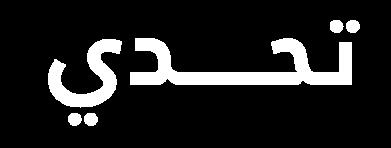

29
We’ve taken the liberty to show what these three types of styles look like using our magazine’s name in arabic. Tein wa Zaytoon, meaning Fig&Olive.
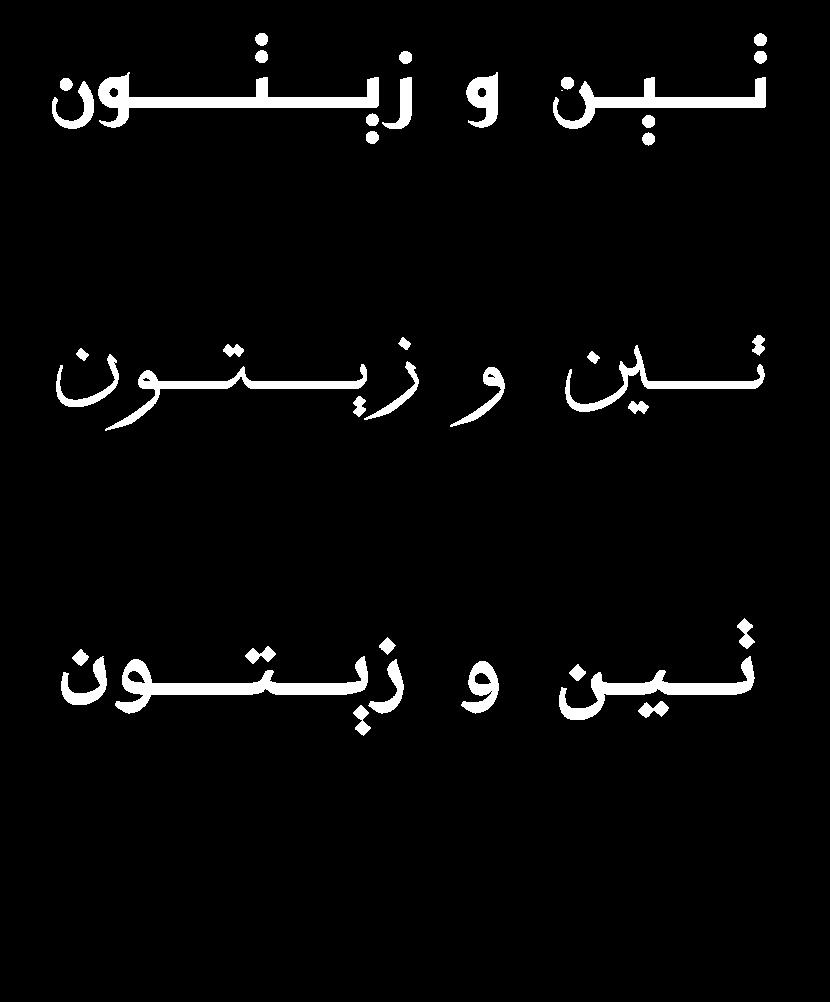
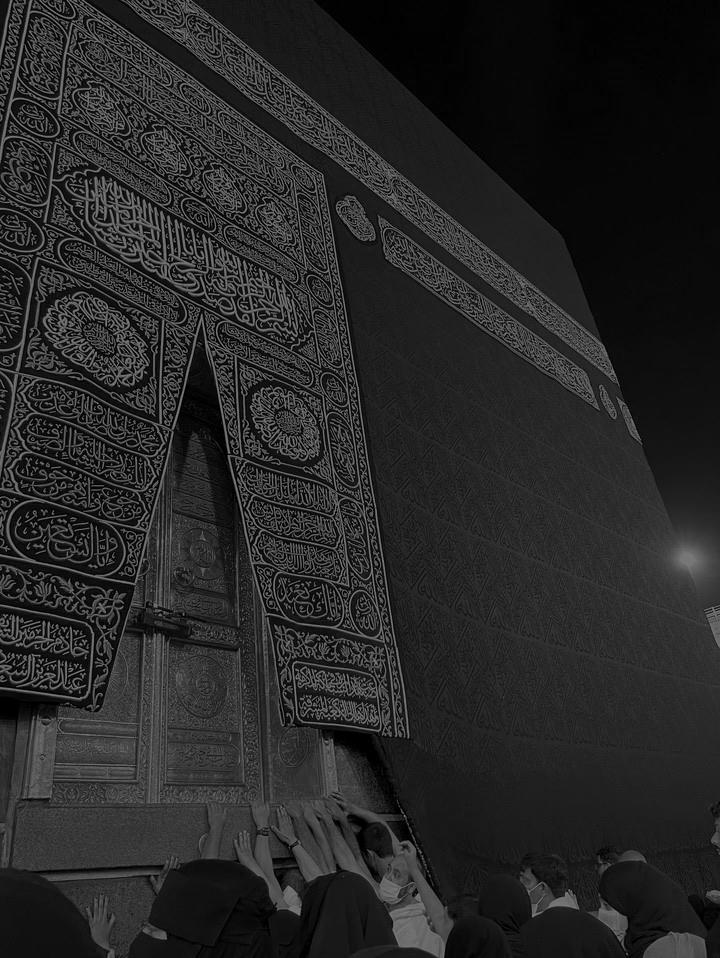 Kufic
Thuluth
Kufic
Thuluth
30
Naskh
ARABIC CALLIGRAPHY
WRITTEN BY: SADDQA BAHIDRAH

Arabic calligraphy stands as one of the main art forms within Islamic culture, with its diverse array of styles captivating the world. Among the numerous scripts, three iconic forms—Kufic, Thuluth, and Naskh—embody the essence of Arabic calligraphy, each with its distinct beauty, historical significance, and regional variations.
Kufic script, with its bold and angular letterforms, emerged in the early Islamic period, reflecting the strength and grandeur of the era. It served as the primary script for the earliest Quranic manuscripts and adorned architectural masterpieces, such as the Dome of the Rock in Jerusalem. Kufic’s geometric precision and intricate interlacing patterns showcase the art form’s harmonious blend of calligraphy and geometry, making it a symbol of Islamic architectural splendor.
Preserving and reviving the artistry of Kufic, Thuluth, and Naskh scripts is essential to safeguard the cultural and historical heritage they embody. Art institutions, educational initiatives, and cultural organizations should prioritize the teaching and practice of these scripts, nurturing a new generation of calligraphers who can master their techniques and push the boundaries of innovation.
Thuluth script, characterized by its flowing curves and elongated proportions, represents the pinnacle of Arabic calligraphic elegance. It evolved during the medieval period, gaining popularity for its use in royal commissions and grand religious manuscripts. Thuluth’s graceful, cursive forms and intricate ornamentation have adorned palaces, mosques, and illuminated Quranic pages. Its refined aesthetic and versatility in adapting to various artistic mediums have made it an enduring symbol of sophistication in Islamic art.
Additionally, digital technology offers exciting possibilities for the continued exploration and integration of these scripts into contemporary design and typography. The fusion of traditional calligraphy with modern digital tools allows for the creation of captivating typographic designs that pay homage to the aesthetics of Kufic, Thuluth, and Naskh, while expanding their reach to a global audience.

Naskh script, known for its legibility and versatility, arose in the 10th century and remains widely used today. It’s clear, well-proportioned letterforms allow for easy reading and writing. Naskh script’s practicality and adaptability have made it the primary script for everyday writing, official documents, and printed materials throughout the Islamic world. Its simplicity and elegance continue to inspire contemporary calligraphers and typographers, bridging tradition and modernity in the realm of Arabic typography.

31
MOVIE NIGHT
Learn more about what Pratt Insititute’s first ever Ramadan Movie Night and how it helped to trailblaze a path to fostering a community for the Muslims on campus.
The Pratt Muslim Student Association hosted the first ever Ramadan movie night iftar, bringing together members of the Pratt community to celebrate Ramadan with joy and inclusivity. This event offered memories to last a lifetime. The event showcased specially designed meal boxes, an enlightening film screening, vibrant decorations, and a collective prayer, providing attendees an opportunity to learn, connect, and embrace the spirit of Ramadan for the first time at Pratt Institute.
To ensure a comfortable and enjoyable breaking of the fast, Saddqa Bahidrah and Zahraa Nasralla thoughtfully designed meal boxes. Each box contained an assortment of dates, refreshing beverages, and a variety of snacks. These carefully curated selections catered to diverse taste preferences, ensuring that everyone found something to satisfy their palate. The meal boxes not only nourished the attendees but also symbolized the significance of breaking fast together, fostering a sense of unity and shared experience.
In the true spirit of Ramadan, the film building was adorned with vibrant and festive decorations. The space was transformed into a welcoming and culturally immersive environment, creating a sense of warmth and celebration. The decorations reflected the colors, motifs, and symbols associated with Ramadan, allowing attendees to fully immerse themselves in the atmosphere of this special time.
An integral part of the event was the collective prayer, where members gathered to engage in praying Maghrib. This moment felt particularly moving as this isn’t something that typically happened at Pratt. By collectively participating in the prayer, it fostered a sense of unity. The prayer served as a reminder of the core values of Ramadan and reinforced the importance of community in this month.
One of the highlights of the event was the captivating film screening featuring the work of Ahmad Alshugairi, a renowned figure from Saudi Arabia known for his enlightening exploration of cultural and religious subjects. Through his thought-provoking documentaries and presentations, Alshugairi provided valuable insights into the traditions and customs of Ramadan, offering attendees an opportunity to deepen their understanding and appreciation of this sacred month. The film screening served as a medium for engaging in meaningful discussions and broadening perspectives with others in attendance as well.
32









33
RAMADAN WORKSHOP
At the workshop, we all had a chance to learn more about Ramadan and how it’s celebrated worldwide. The discussions with each other gave us valuable insights into the spiritual & cultural aspects of this holy month and how they differ from culture to culture. It was enlightening to see this event bring students from different backgrounds closer and foster understanding and respect.
One of the highlights of the workshop was getting our hands busy with creating handmade cardboard lanterns and painting them. We got to express our creativity while making beautiful Ramadan-themed crafts. It was a great way to learn about traditional Islamic motifs, calligraphy, and designs associated with Ramadan. The decorations we made added a personal touch and made our living spaces look even more special.
Oh, the food at the workshop was simply delicious! Although, we learned our lesson to order much more next time (the turnout was amazing!) We had the opportunity to enjoy a variety of mouthwatering traditional Ramadan dishes. From aromatic Afghanistani foods to sweet and savory pastries, our taste buds were in for a treat. Sharing these meals together created a warm and friendly atmosphere, where we bonded over good food and great conversations.
The workshop was filled with exciting activities that highlighted the traditions and customs of Ramadan. We had henna art sessions, where we adorned our hands with beautiful designs. We thought we’d let everyone take their own shot at henna, seeing as though we’re at a school with so many talented individuals. Henna was one way for everyone to express their talents in a cultural forum.
The Student Union went through a beautiful transformation during the workshop. The place was decked out with colorful decorations, lanterns, and lights, creating an incredible festive vibe. Stepping into the student union felt like stepping into a whole new Pratt. The vibrant ambiance truly captured the spirit of Ramadan and made us feel right at home.
Here are some photos we took on the Polaroid from the night of the workshop! Known people featured from top left to bottom right: Nilufer Hos, Meryem Erdal, Semoi Khan, Sadeen Owis, Zahraa Nasralla, Jehan Rana, Nora Yassin, Laila Almuwali, Aiden Perez,.
The Muslim Student Association of Pratt Insitute hosted a festive “Ramadan Workshop” where the Muslim community at Pratt came together to celebrate, enjoy interactive activities, and savor delicious food. The Student Union was beautifully decorated for the occasion.
34









35
RAMADAN IFTAR
Pratt’s Rose Garden was the setting for a casual and heartwarming official Ramadan iftar. With cozy Majlisstyle ground seating adorned with lanterns and string lights, friends from campus gathered for a potluckstyle feast, sharing delicious dishes and creating a perfect evening filled with unity and joy.
The Rose Garden at Pratt became a cozy haven, where everyone gathered on the ground in a relaxed Majlis-style seating arrangement. Lanterns added a warm glow, casting a soft light on the surroundings and creating a whimsical ambiance. It was a beautiful sight as friends and community members came together, embracing the spirit of togetherness during Ramadan, something many of us missed doing with our families.
The heart of the event was a delightful potluck-style feast. Each member brought a dish to share, resulting in a diverse and mouth watering spread of culinary delights. From traditional Ramadan favorites to homemade specialties from different cultures, the potluck showcased the vibrant flavors and traditions of the community. Sharing and savoring the delicious food fostered a sense of connection and joy.
The official Ramadan iftar in Pratt’s Rose Garden embodied the essence of Ramadan, bringing us all together in an unprecedented time where we’re so far from all the people we love and used to share these meals with.
With each shared dish, laughter, and conversation, the sense of community grew stronger, making it an evening to remember. This event exemplified the beauty of sharing meals, stories, and happiness, and it was a testament to the warmth and togetherness that Ramadan brings.
These photos are a glimpse of the atmosphere and unity this event showcased. Known people featured from top left to bottom right: Sadeen Owis, Nafhan Oodri, Laiba Sarwar, Semoi Khan, Eniola Awosanya, Milena Radic, Bilal Sadiq, Laila Almuwali, Layal Taleb.
36









37
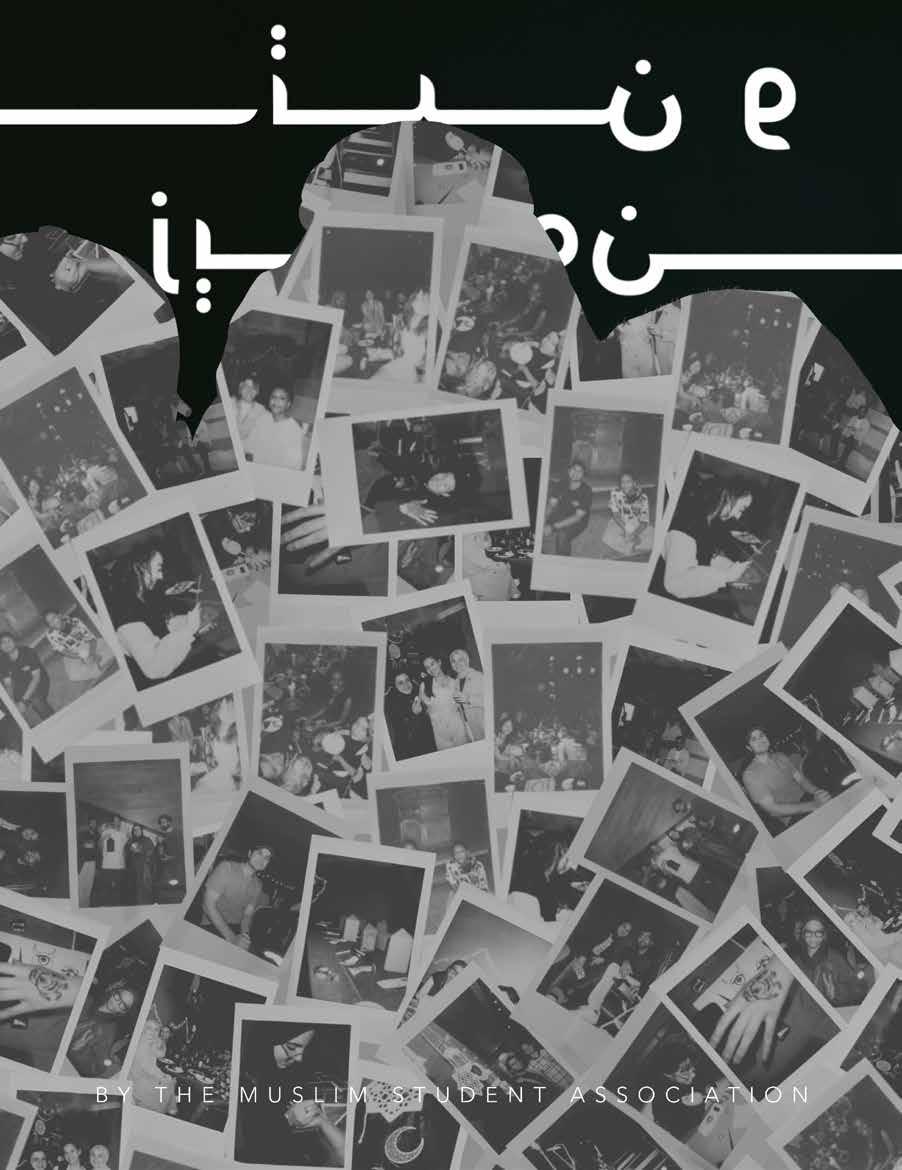









 The Muslim Student Association’s logo designed by rising 3rd year Animation Major Nora Yassin. Nora was a founding board member of the Muslim Student Association and her contributions were critical to the foundation of the MSA.
The Muslim Student Association’s logo designed by rising 3rd year Animation Major Nora Yassin. Nora was a founding board member of the Muslim Student Association and her contributions were critical to the foundation of the MSA.













































 WRITTEN BY: SADDQA BAHIDRAH
WRITTEN BY: SADDQA BAHIDRAH





 Kufic
Thuluth
Kufic
Thuluth































